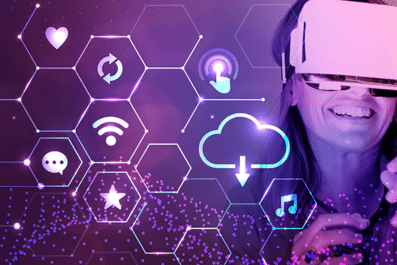Top 5 Challenges Governments Face in IT Modernization (2025 Guide)
70% of government IT modernization projects fail to meet deadlines or budgets (Gartner 2024).
 5 Min
5 Min 
As we move into 2025, public sector organizations continue to face mounting pressure to update aging technology infrastructure while contending with significant roadblocks that impede progress. From decades-old legacy systems to increasingly sophisticated cybersecurity threats, government agencies face unique challenges in their digital transformation journeys.
Today’s citizens expect the same seamless digital experiences from government services that they enjoy from private companies. Yet, public sector institutions struggle with complex legacy dependencies, strict compliance requirements, and chronic resource limitations. In this 2025 guide, we break down the top 5 roadblocks—and how forward-thinking agencies are overcoming them as we look ahead.
Challenge 1: Legacy System Dependencies
The Mainframe Trap
85% of agencies rely on 20+ year-old COBOL systems (U.S. GAO Report). These legacy systems weren’t designed for today’s interconnected, cloud-based environment, yet they often manage critical government functions. As we enter 2025, dependence on outdated technologies creates increasingly urgent problems:
- High maintenance costs for aging hardware
- Difficulty finding developers skilled in obsolete programming languages
- Inability to integrate with modern APIs and services
- Security vulnerabilities in unsupported systems
Success Story: Australia’s Tax Office provides an instructive example of legacy system migration done right. Their phased approach to moving from mainframes to cloud infrastructure prioritized critical services first while maintaining parallel systems during transition periods. The key to their success was comprehensive data mapping and rigorous testing before each migration phase—a model that remains relevant for 2025 initiatives.
Challenge 2: Cybersecurity & Compliance Requirements
Government agencies face a dual challenge: they must modernize while simultaneously increasing security postures. Government cyberattacks rose 300% since 2020 (Accenture), with projections showing even greater threats emerging through 2025.
Public-sector cybersecurity faces unique challenges in the coming year:
- Government systems are high-value targets for increasingly sophisticated nation-state actors
- Evolving compliance requirements like FedRAMP, FISMA, and CMMC add complexity
- Privacy concerns regarding citizen data require additional safeguards
- Interconnected systems create broader attack surfaces
Emerging Solution: Zero-trust architectures are becoming essential in 2025 government IT modernization strategies. By treating all users and systems as potentially compromised, these approaches minimize damage from breaches. Forward-thinking agencies are implementing continuous verification protocols rather than perimeter-based security—a critical shift for the 2025 threat landscape.
Challenge 3: Budget Constraints
IT modernization costs for U.S. federal agencies exceed $100B annually, yet budget allocations often fall short of actual needs. Government IT budget planning faces several distinct challenges as we look toward 2025:
- Annual funding cycles that conflict with multi-year modernization roadmaps
- Difficulty justifying upfront investments despite long-term savings
- Competition with other critical government services for limited funds
- Requirements to maintain legacy systems while building new ones
Strategic Approach: For 2025, agencies finding success despite budget constraints typically employ phased rollouts tied to measurable outcomes. Public-private partnerships have also proven effective, with shared risk models allowing governments to modernize without massive capital expenditures. The U.S. Department of Agriculture’s successful cloud migration demonstrates how breaking projects into smaller, budget-friendly increments can maintain momentum despite fiscal constraints—a strategy becoming essential in 2025.
Challenge 4: Talent Shortages
60% of agencies lack in-house cloud/DevOps skills (Deloitte). The government IT talent gap continues to widen as agencies compete with private sector salaries and benefits. Key factors contributing to this challenge in 2025 include:
- Accelerated retirement of experienced personnel familiar with legacy systems
- Intensifying difficulty attracting cloud-native developers to government roles
- Procurement and hiring processes that move too slowly for the evolving tech talent market
- Limited training budgets for upskilling existing staff
Innovative Solutions: Government agencies preparing for 2025 talent challenges are implementing multi-pronged approaches. Internal upskilling programs paired with strategic vendor collaborations allow knowledge transfer while filling immediate gaps. Some agencies have implemented remote work policies to access talent regardless of geography, while others have created special hiring authorities to bypass traditional civil service hiring timelines—adaptations that will be crucial in the 2025 labor market.
Challenge 5: Citizen Experience Gaps
Only 30% of citizens rate digital government services as “user-friendly” (OECD). Despite significant investment, government digital interfaces often lag behind private sector equivalents, creating frustration and low adoption rates. This gap is expected to become even more pronounced in 2025 as citizen expectations continue to rise.
Digital government UX challenges for 2025 include:
- Complex processes stemming from regulatory requirements
- Siloed systems that don’t share data effectively
- Accessibility requirements that aren’t always implemented effectively
- Limited user research and testing due to budget constraints
Success Model: Estonia’s government digital services achieve 99% online adoption by prioritizing user experience from the outset. Their “once-only” principle ensures citizens never need to enter the same information twice across services. By building digital-first processes rather than digitizing paper-based ones, Estonia created intuitive services that citizens genuinely prefer to use—a model that forward-looking agencies are studying as they plan for 2025.
How Stark Digital Helps Governments Overcome Modernization Challenges in 2025
At Stark Digital Media Services, we understand the evolving challenges facing government IT modernization initiatives in 2025. Our forward-looking approach combines deep public sector experience with cutting-edge technical expertise:
- Secure migration pathways from legacy systems to modern architectures
- Compliance-first development ensuring all solutions meet evolving regulatory requirements
- Flexible engagement models that work within government budgeting cycles
- Knowledge transfer focus that builds internal capacity while providing immediate support
- User-centered design that drives adoption of digital government services
Government agencies partner with Stark Digital when they need secure, scalable IT modernization that respects their unique constraints while delivering measurable outcomes for citizens in 2025 and beyond.
Ready to overcome your agency’s IT modernization challenges? Explore our government sector case studies or contact our public sector specialists today.




